
views
Choosing the Right Calories

Choose nutrient-dense foods. Nutrient-dense foods are foods that are calorie-heavy but also filled with nutrients our bodies need to fuel activity. These are essential for recovery, as they will help to restore normal levels of micronutrients in your body and decrease the risk for developing conditions associated with nutritional deficiencies, such as osteoporosis or hair loss. While certain foods, like empty carbs and junk food, can move the number on the scale up fast, they're not as healthy an option as going for high-calorie, nutrient-dense choices. Nutrient-dense foods are beneficial in that you need to eat less to gain the benefits. This can be particularly helpful to people recovering from anorexia, who struggle to adjust to typical portion sizes. A small or medium serving of a nutrient-dense food provides needed calories and nutrition. A nutrient-dense meal generally includes high-protein options mixed with fruit, veggies, and healthy carbohydrates like brown rice and whole grain pasta or bread. Nutritionist Amy Chow recommends that you "choose at least 3 food groups for a balanced meal and at least two food groups for a balanced snack." Some examples of nutrient dense food include salmon, chicken, walnuts, bananas, flaxseeds, shellfish, whole grain bread, olive oil, brown rice, oatmeal, yogurt, and dried fruits without added sugar.

Add extra calories when you can. When you have an opportunity to add an extra 50 or 100 calories, take it. Any amount of calories helps the process of gaining back weight. Plant fats, such as nuts, are healthy and high in calories. Add mixed nuts to a salad. Nut-based spreads, like almond or cashew butter, can be added to toast and sandwiches. Hummus is made from chickpeas, and can be a great dip or addition to a pita wrap. If you don't know the calorie count, you can use your hand to measure out an approximate amount of food. According to nutritionist Amy Chow, "a closed fist is 1 cup, the palm of your hand is about 100g meat, and your thumb is equal to about 1Tbsp." Consider adding extra salad dressing to salads or pasta, ketchup or mayonnaise to grilled meat or sandwiches, sour cream to Mexican dishes. When possible, opt for high-calorie condiments and dressings such as ranch, mayonnaise, thousand island dressing, and Caesar salad dressing. Granola, loaded with nuts and dried fruits, is a good source of nutritious calories and can be added to yogurt or eaten as a snack. Drizzle canola or olive oil, which both contain healthy fats, over salads, soups, casseroles, and whole grains.

Drink your calories. Many calories can be gained by drinking beverages that contain nutritious calories. Liquids aren't as filling as whole foods so you can add nutrients and calories without feeling bloated. Good, healthy liquid choices include 100% fruit juice, kefir, skim milk or milk alternatives (such as soy or almond milk), buttermilk, and teas sweetened with natural sweeteners like honey. Smoothies, made from fruits and veggies, are ideal. They are calorie-heavy, easy to consume, and can be bolstered with a variety of healthy additives like wheat germ, nut butter, and protein powder. Meal replacement smoothies and drinks are also a good choice, and available at most groceries stores. For optimal weight gain, however, eat them in addition to solid food snacks and bolster them with fruits, powdered milk, or soft silken tofu.
Changing Your Attitudes About Weight and Eating
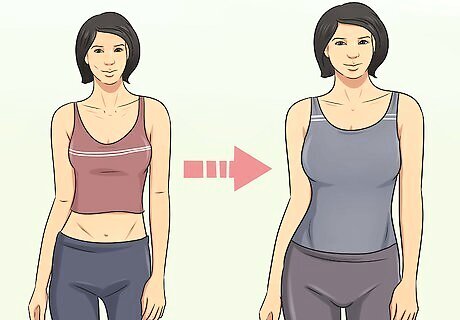
Be prepared for the physical consequences of recovery. Many people recovering from anorexia have an unhealthy mentality about food and weight that is reinforced during the recovery process. People recovering from anorexia often feel discouraged to continue on the path to weight gain when they hit certain setbacks. Being aware of these potential physical consequence and their temporary nature can help you cope. Abdominal weight gain is common in those recovering from anorexia. While the reasons for this are still debated, the vast majority of studies indicate any abnormal weight distribution normalizes after one year of recovery. In other words, this side effect is temporary. Many people recovering from anorexia find it helpful to look at stomach fat as a positive sign of recovery and health. Rapid weight gain, especially in the first days and weeks, is also common. Fluid between the tissues in the body's cells and glycogen stores in the liver and muscle are replenished, which leads to quick weight gain. Do not weigh yourself too often during the early period of recovery as you may become disturbed by how quickly the number on the scale moves up. This is a healthy, normal part of recovery and weight gain slows as you reach a normal, healthy weight for your body. Be aware there may be some unpleasant physical side effects. When the body has been deprived of food for so long, reintroducing normal eating habits are a shock to the system. Side effects include diarrhea, nausea, weakness, sleep disturbances, a heightened sensitivity to cold, a weak bladder, and constipation. Be aware going in such side effects may occur, but view them as signs you're on the path to a healthier, happier you.
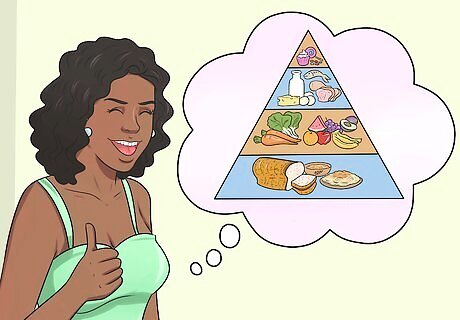
Change your food attitude. Many people recovering from anorexia see diet as a means of continual deprivation, an attitude that leads to the development of anorexia. Challenging yourself to view food as an important part of a healthy lifestyle rather than a necessary evil is a vital step to weight gain and overall recovery. Have a good support system. Surround yourself with friends and loved ones who eat well and have a healthy body image and relationship with food and eating. It's hard to recover from anorexia if you're in the presence of a perpetual dieter or someone who binge eats and drinks. You need models for a healthy relationship with food, weight gain, and eating. Keep a food journal. Keeping track of food intake can lead to healthier eating habits, but it can also lead to a healthier attitude overall. Track how you're feeling before and after you eat, and what kind of thoughts you're having that may affect eating habits and lead to unnecessary food restriction. Learn from others. Seek out success stories from other people recovering from anorexia, whether from local support groups or online resources, and figure out what they did to change their relationship with food and eating for the better.
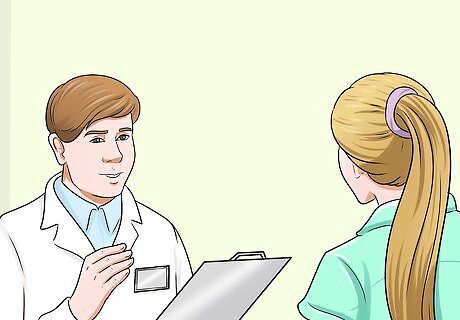
Get counseling. Anorexia is a particularly dangerous disorder, and if you suffer from anorexia you are unlikely to simply put weight back on without psychiatric intervention. A variety of psychotherapy approaches demonstrate effectiveness when dealing with eating disorders, and seeking out a counselor in your area can keep you on the path to gaining weight. According to nutritionist Amy Chow: "Anorexia nervosa has a significant mental health component. It is important to address the psychological reasons behind the eating disorder as that is the main reason behind the illness, and not necessarily nutrition." Select a therapist who is up to date on all the science of eating disorders. When contacting a potential therapist, ask about their training, their experience treating patients with eating disorders, what their treatment options and goals are, what certifications they hold, and whether they're part of any professional eating disorder organizations. In particular, look into cognitive behavioral therapy (CBT). The objective of CBT is to change faulty thought processes about food such as all-or-nothing thinking, judgmental thinking, and catastrophizing. A CB therapist will help to break the patterns of disordered eating through the use of food monitoring, thought monitoring, meal regularity and nutritional monitoring. Family counseling is also important, especially for adolescents. To locate a therapist in your area, you can try calling the psychiatric department at a university and asking for a list of recommendations of people trained in their program, calling a large clinic and asking for a referral, and talking to friends and family members who are receiving counseling or therapy. Do not limit your search to providers listed by your insurance company. Even providers who claim they don't accept your program may be able to make an exception or offer you a discount of some kind.

See a doctor who specializes in nutrition. Once again, anorexia is serious and you can't expect to gain weight in a healthy fashion going at it alone. Seeking professional help from a nutritional specialist is vital to gaining weight. Weight gain is important, but some side effects can be dangerous to your health. A physician should be supervising the recovery process and meeting with you in a medical office on a regular basis.
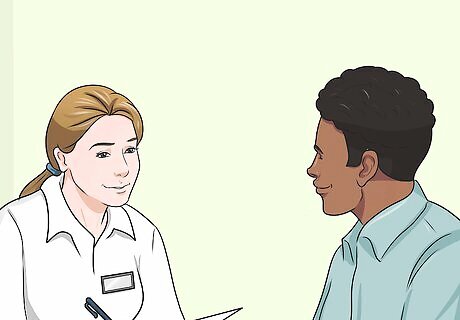
Follow-up with your treating medical provider. Weekly weigh-ins, vital signs measurement, and periodic laboratory testing including CBC, serum electrolytes and serum amylase levels are important. Make follow-up appointments with your doctor and don't skip them.
Altering Your Eating Habits
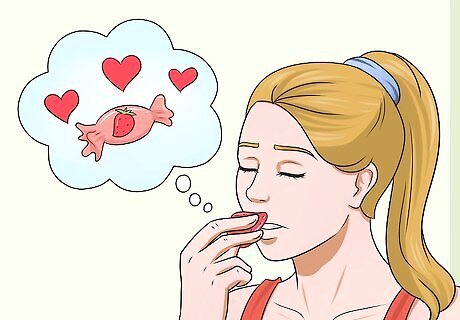
Practice mindful eating. How you eat is as important to weight gain as what you eat. Mindful eating is a practice with roots in Buddhist teachings and aims to reconnect us with the experience and enjoyment of eating. The end goal is to eat based on physical cues, like the body's need for hunger, rather than for comfort or out of boredom. Eat slower. Take time to savor each bite and chew more. This will make you realize you're full faster, which can lead to a healthier relationship with food and hunger. Eat in silence. If you eat meals with family members or friends, this may be difficult, but suggest a period of silence to focus on the food. Turn off the TV and your cell phone as well. Focus on the flavor, and consider how much you are enjoying the meal.
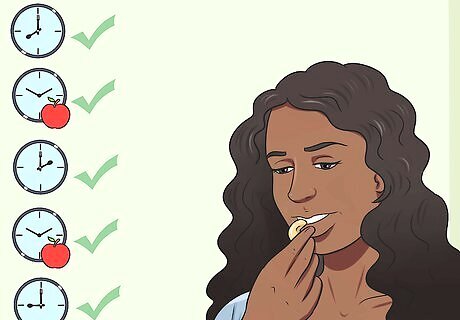
Eat throughout the day. Anorexia is a disease often defined by erratic eating patterns. Your body needs a continual source of energy all day, especially so if you're trying to gain back weight lost through a disorder like anorexia. Eat regular meals, spaced about three to four hours apart, to gain weight in a steady, healthy fashion. As nutritionist Amy Chow states: "Mechanical eating, or eating based on a time schedule rather than hunger level, is a common way to gain weight to recover. It can help you slowly start to recognize hunger and fullness cues again, which are often lost with eating disorders because they are suppressed for a long period of time." Mechanical eating will also give more eating opportunities throughout the day to provide more nutrition consistently. Snack more frequently. Reminding yourself to eat more often, to snack between meals, and to eat whenever you feel hungry can help you learn to follow cues from your stomach. Get into the habit of snacking throughout the day on small healthy foods. This can increase your daily calorie intake without overloading your stomach at each meal.
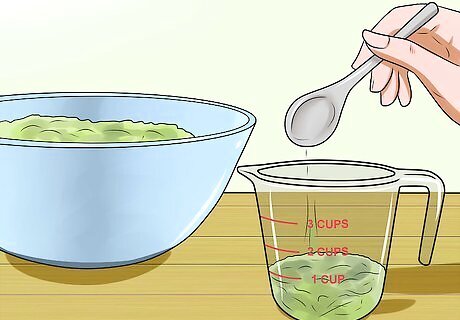
Learn normal portion size. Gaining weight after being anorexic is difficult because your perception of portion size is warped. Adjusting to normal portions can be a tricky part of the recovery process. Do not skip meals. This prevents you from adapting to normal portion sizes, as you're more likely to go overboard at your next meal and end up feeling sick and discouraged. Eat three meals a day with snacks in between. Measure and weigh your food. Humans are not good judges of size, so keep a small scale and measuring cups on hand when preparing meals. Make sure you're getting a full serving of your favorite foods. Learn handy cheats in regards to size and weight. For example, 3 ounces of lean meat is the size of a deck of cards and 1 cup of breakfast cereal is about the size of a fist. Gather tidbits like this, from online and from friends and doctors, so you'll have a good sense of how much food is adequate. Plan your meals beforehand, keeping in mind how many calories you'll need and what types of food you should consume for a healthy goal for that day. Set consistent eating times that works for your schedule (ie. every 3-5 hours) and choose at least 3 food groups for a balanced meal (ie. grains, protein, fruits/veggies).










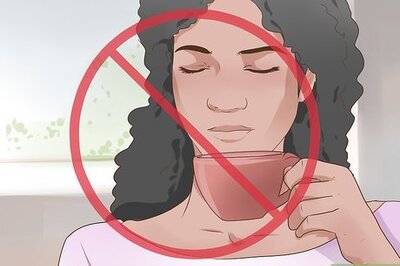


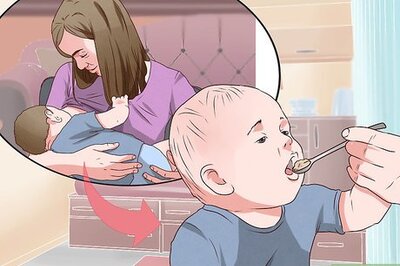
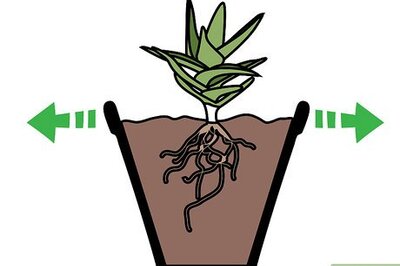




Comments
0 comment